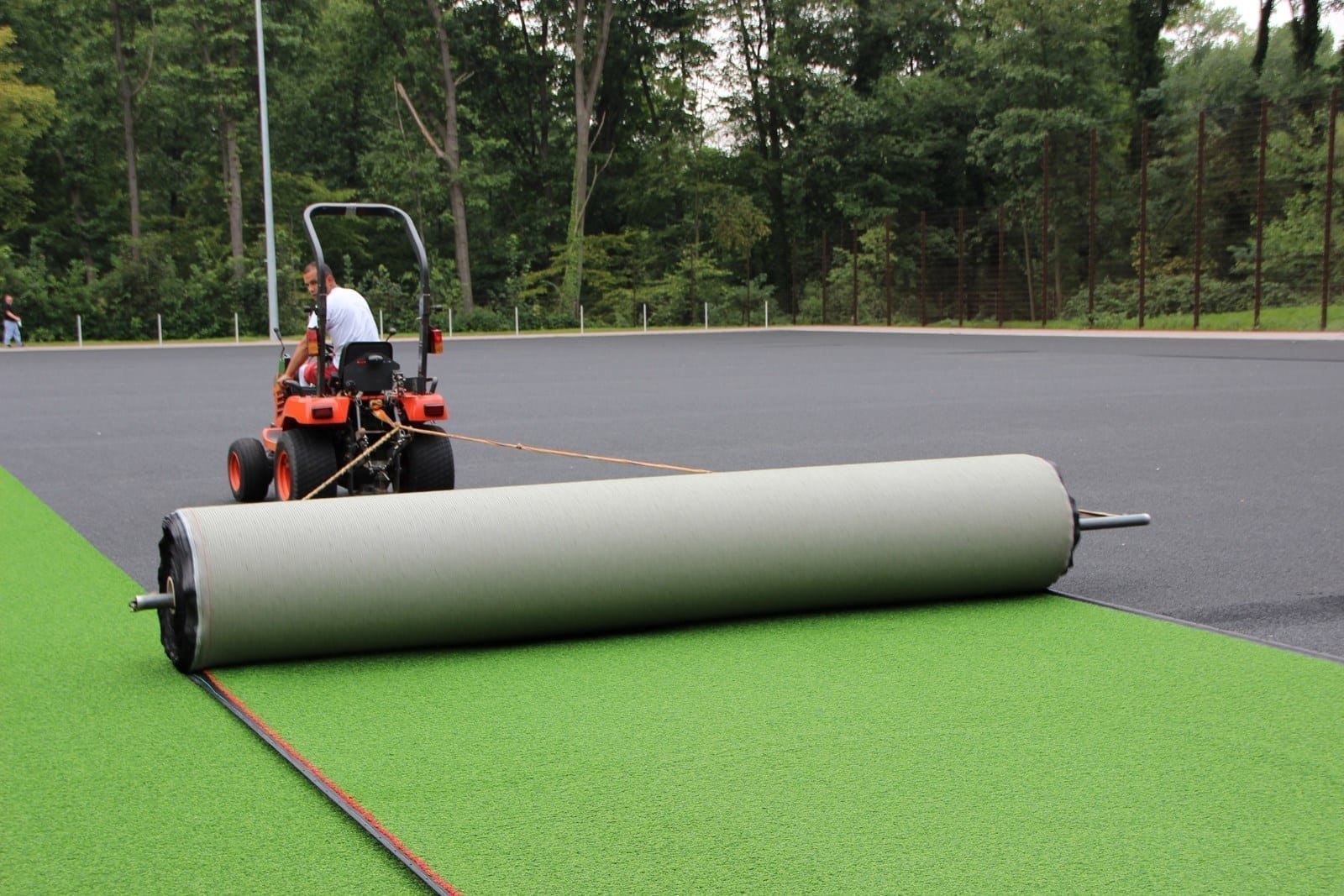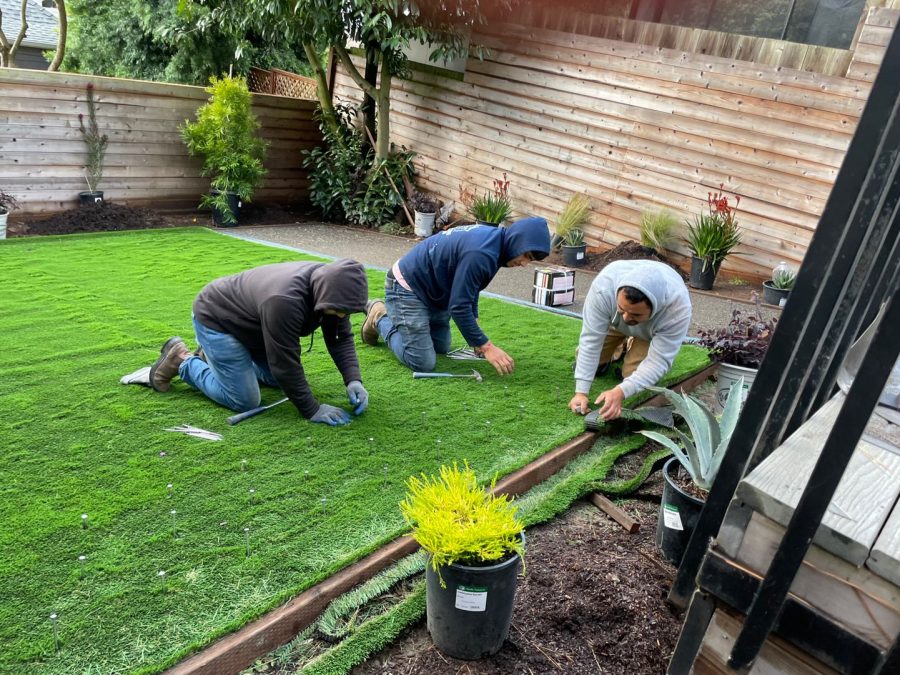Explore the Environmental Benefits of Opting for Artificial Lawn Solutions
The fostering of synthetic grass options offers an engaging possibility to address pushing ecological challenges. By substantially lowering water use and reducing the application of damaging chemicals, these alternatives not just advertise sustainable landscape design however likewise secure local ecosystems. In addition, the lower carbon footprint related to lowered maintenance tasks adds to a much more lasting technique to land management. However, the effects of these benefits prolong past plain conservation initiatives, questioning about their lasting influence on environment preservation and general ecological equilibrium. Exploring these dimensions exposes a complicated interaction worth considering.
Water Conservation Conveniences
One of the most substantial benefits of man-made grass is its capability to conserve water. In comparison, man-made grass does not need watering, considerably reducing the total need for water sources.
By eliminating the need for normal watering, man-made turf contributes to lasting landscape techniques and assists minimize the environmental influence of extreme water consumption. The preservation of water extends to the reduction of overflow, which can lead to dirt erosion and river air pollution.
Additionally, the setup of synthetic grass permits homeowners and districts to designate water sources extra efficiently, concentrating on vital usages such as alcohol consumption water and farming. The shift in the direction of synthetic grass not only promotes accountable water use however likewise lines up with more comprehensive environmental goals intended at protecting natural deposits.
As communities progressively focus on sustainability, the water preservation advantages of synthetic grass provide a compelling situation for its adoption in industrial and property landscape design tasks.
Decreased Chemical Usage
The change to artificial turf dramatically decreases the dependence on chemical therapies commonly made use of in all-natural yard upkeep. Conventional grass administration typically involves the application of fertilizers, herbicides, and pesticides to advertise development and control parasites. These chemicals can present risks to human health and wellness, local wild animals, and the setting, adding to dirt and water contamination.
In comparison, artificial grass gets rid of the need for these unsafe compounds. By minimizing the release of artificial substances right into the environment, artificial grass promotes much healthier dirt and water systems.
Furthermore, the lack of chemical overflow connected with fabricated turf installments aids secure regional waterways from pollution, supporting marine life and keeping biodiversity. Arizona turf. As neighborhoods increasingly focus on lasting practices, choosing fabricated turf provides a practical option that straightens with ecological conservation goals. Through this change, home proprietors can delight in rich eco-friendly rooms without compromising ecological wellness, leading the way for a much more lasting future
Lower Carbon Impact

Moreover, the installment of synthetic grass can cause substantial water conservation. Natural yards call for significant quantities of water for watering, which not just adds to the carbon footprint related to water extraction and treatment however likewise stress local water sources. In contrast, synthetic grass needs marginal maintenance, requiring no watering, therefore considerably decreasing water usage and its linked power prices.
In addition, the long life of artificial lawn adds to its lower carbon impact. With a life expectancy of approximately 15 years or more, the demand for regular substitutes is lessened, leading to less waste and lower energy intake in manufacturing and throwing away conventional turf alternatives. Overall, fabricated grass offers a lasting choice for eco aware landscaping.
Environment Preservation
Habitat preservation is an important consideration in the argument over landscape design options, especially when contrasting synthetic grass to all-natural grass. Natural yard lawns typically require substantial upkeep, including using plant foods, herbicides, and pesticides, which can adversely impact regional ecological communities. These chemicals can leach into the dirt and waterways, hurting indigenous plants and fauna and disrupting local habitats.
In contrast, artificial lawn presents a possibility to minimize the eco-friendly impact of landscape design. By going with artificial lawn, homeowners can reduce the interruption of all-natural habitats connected with conventional yard web link treatment practices. Synthetic turf eliminates the need for harmful chemicals, thus shielding neighboring wild animals and preserving the stability of surrounding ecosystems. Moreover, the installation of synthetic grass can result in the conversion of previous yard locations right into more biodiverse landscapes, such as pollinator yards or native plant areas, which can support local wildlife.
Ultimately, the shift to fabricated turf not only conserves water and lowers upkeep initiatives but likewise promotes a more harmonious relationship in between human tasks and the natural setting, promoting environment conservation at the same time.
Long-Term Sustainability
Long-lasting sustainability is an essential consider assessing the advantages of synthetic grass over conventional grass yards. Among the most considerable advantages of synthetic turf is its resilience; it can last approximately 15-20 years with minimal maintenance, whereas natural grass calls for regular reseeding and replacement. This durability lowers the demand for constant resources, such as water, fertilizers, and pesticides, which are vital for keeping a healthy grass yard.
In addition, synthetic grass adds to a reduction in carbon emissions connected with lawn treatment devices. Traditional grass typically call for gas-powered mowers, trimmers, and blowers, every one of which add to air pollution. Artificial turf companies phoenix. In comparison, synthetic grass eliminates the requirement for such tools, promoting a cleaner environment
Furthermore, the production of synthetic grass increasingly utilizes recycled products, enhancing its sustainability account. As makers adopt eco-friendly practices, the ecological impact of synthetic turf remains to reduce.

Final Thought
The fostering of synthetic grass solutions presents substantial environmental advantages, consisting of significant water preservation, decreased dependence on hazardous chemicals, and a reduced carbon find more information impact. In addition, synthetic grass aids in preserving natural environments by reducing land disturbance and promoting long-term sustainability with the usage of sturdy products. Collectively, these variables highlight the potential of synthetic grass to add positively to ecological health and use a sensible option to standard landscape design practices in a significantly resource-conscious globe.
In contrast, synthetic grass does not require watering, considerably lowering the overall need for water resources. By minimizing the launch of synthetic compounds right into the ecosystem, man-made turf advertises healthier soil and water systems.
Additionally, the installment of synthetic lawn can result in substantial water conservation. In comparison, man-made grass needs marginal upkeep, needing no watering, thereby dramatically lowering water usage and its associated power costs.
